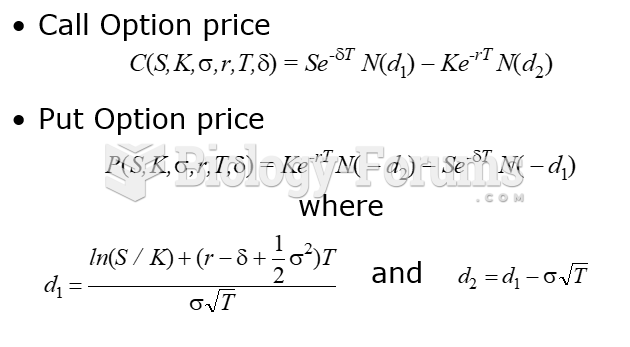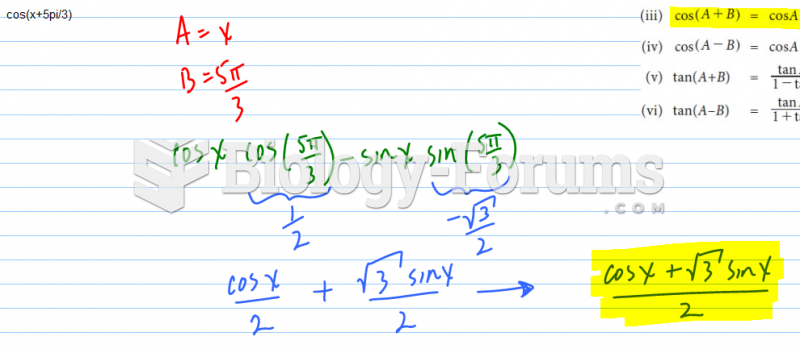|
|
|
Asthma occurs in one in 11 children and in one in 12 adults. African Americans and Latinos have a higher risk for developing asthma than other groups.
The senior population grows every year. Seniors older than 65 years of age now comprise more than 13% of the total population. However, women outlive men. In the 85-and-over age group, there are only 45 men to every 100 women.
Approximately 25% of all reported medication errors result from some kind of name confusion.
Multiple experimental evidences have confirmed that at the molecular level, cancer is caused by lesions in cellular DNA.
There used to be a metric calendar, as well as metric clocks. The metric calendar, or "French Republican Calendar" divided the year into 12 months, but each month was divided into three 10-day weeks. Each day had 10 decimal hours. Each hour had 100 decimal minutes. Due to lack of popularity, the metric clocks and calendars were ended in 1795, three years after they had been first marketed.
 Apidium may be ancestral to all later higher primates and is reconstructed as looking like a small-b
Apidium may be ancestral to all later higher primates and is reconstructed as looking like a small-b
 Structural MRIs of healthy volunteers with a genetic predisposition to developing depression reveals ...
Structural MRIs of healthy volunteers with a genetic predisposition to developing depression reveals ...





